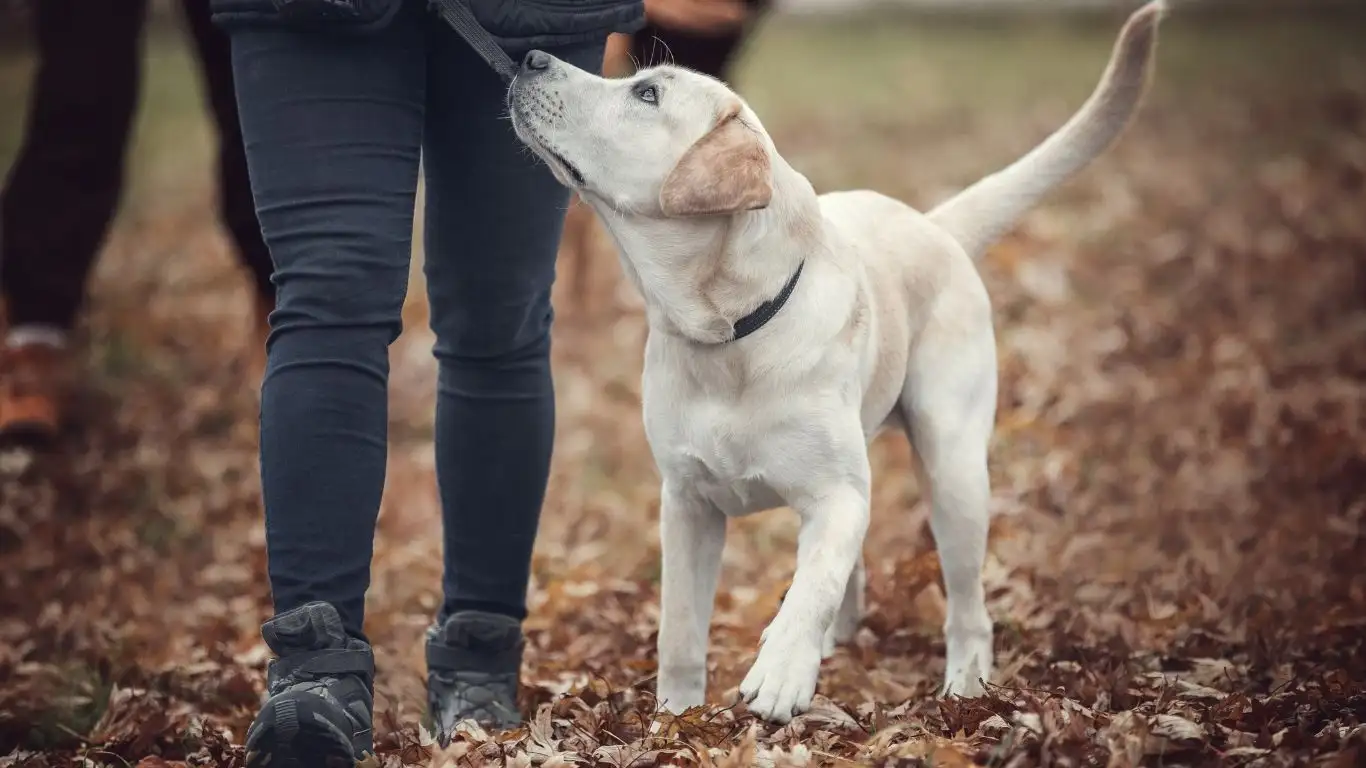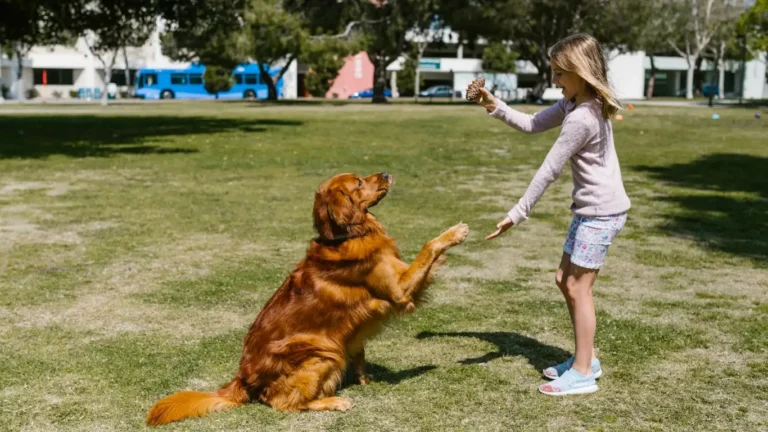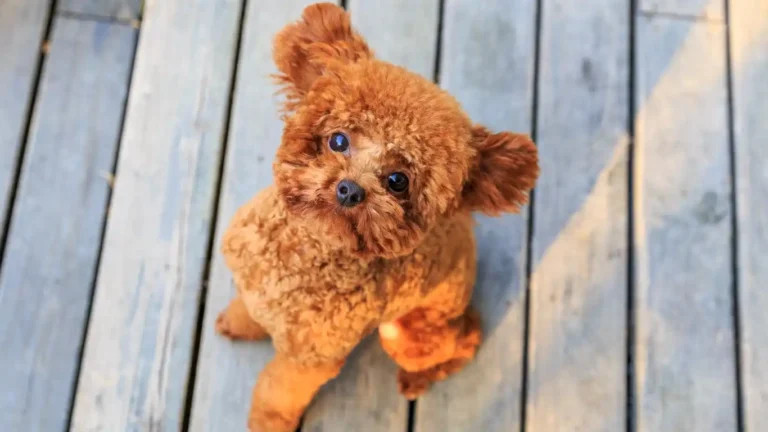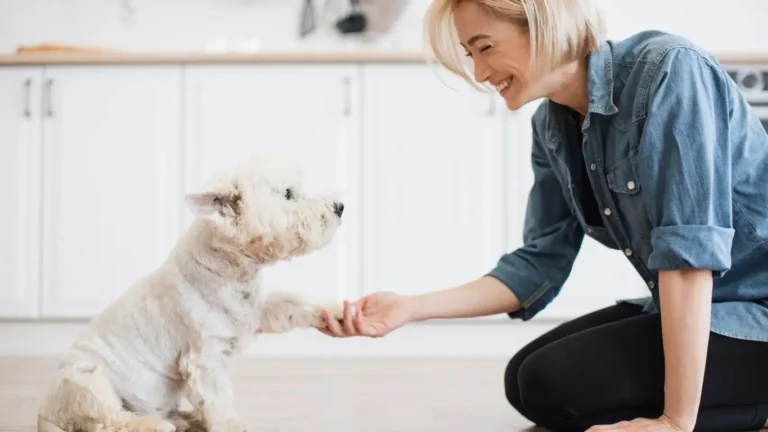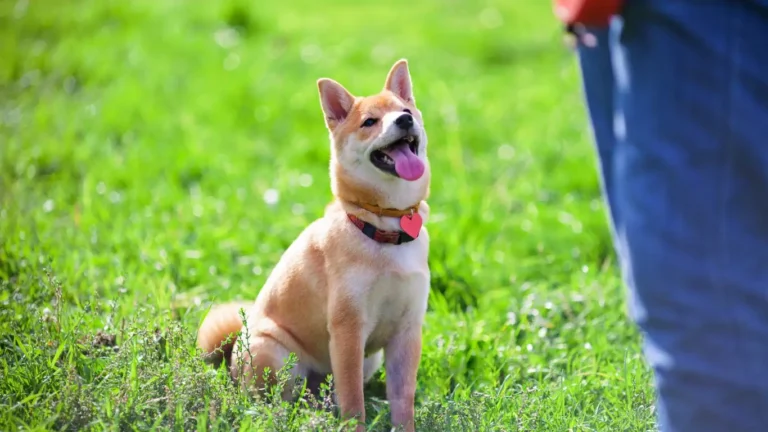How to Train a Dog to Use a Designated Potty Spot Outside Effectively
Training your dog to use a designated potty spot outside can be a life-changing experience for both you and your furry companion. As a Canine-Assisted Therapy Trainer with years of experience, I’ve seen the benefits of consistent, positive reinforcement when it comes to potty training. Whether you’re dealing with a puppy or an adult dog, the process can seem challenging at first, but with a little patience and the right approach, it becomes much easier. In this guide, I’ll walk you through the key steps to successfully teach your dog to use a specific potty area outdoors. Let’s dive right in!
Understanding the Importance of a Designated Potty Spot
Before we get into the nitty-gritty of how to train a dog to use a designated potty spot outside, it’s essential to understand why this is such an important part of training. Many dog owners don’t realize the value of teaching their pets to relieve themselves in a consistent location. By designating a specific potty area, you not only make the clean-up process easier, but you also set clear boundaries for your dog, helping them understand what’s expected.
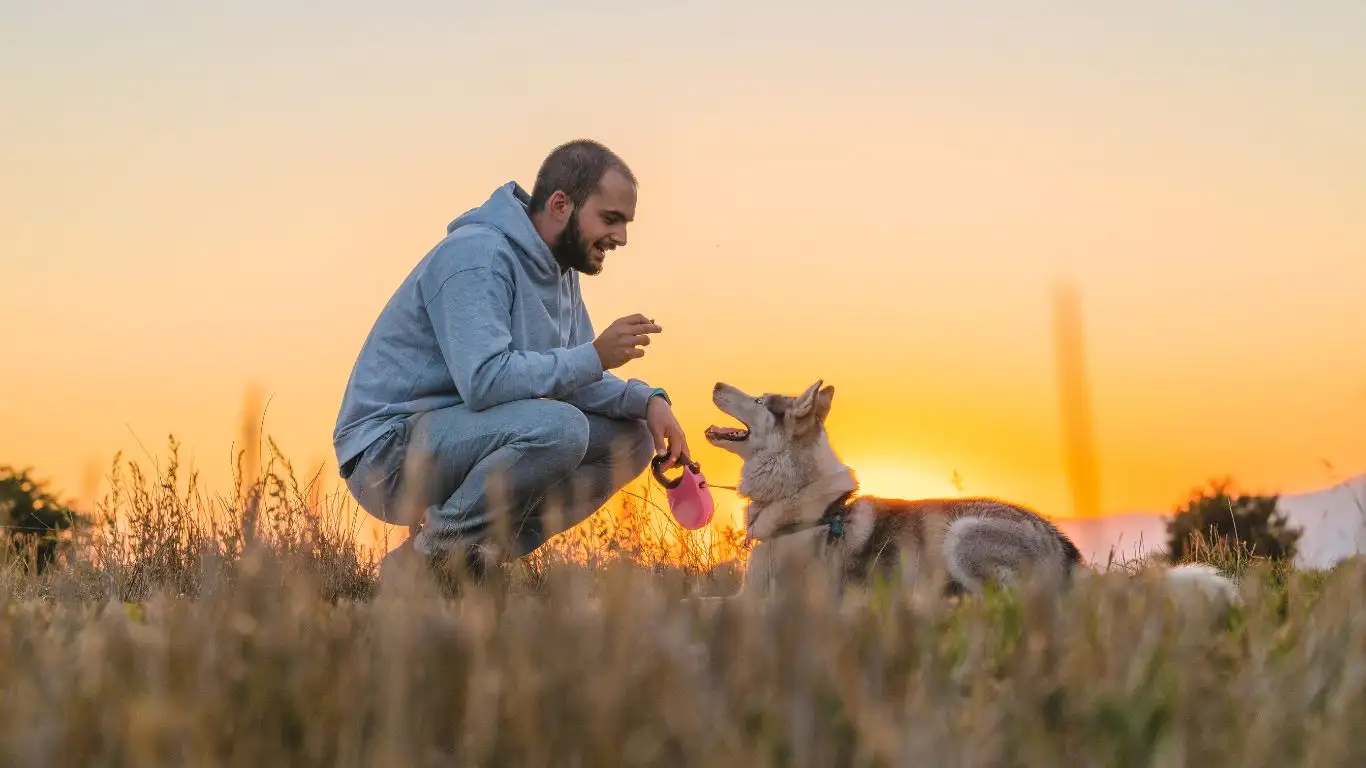
When your dog knows exactly where to go, it reduces confusion and accidents in the house. Plus, it creates a routine, which is something dogs thrive on. As a Canine-Assisted Therapy Trainer, I’ve found that dogs who have a clear understanding of their designated potty area are generally more relaxed and confident. They know where they can go to relieve themselves, and they’re less likely to have accidents indoors.
Establishing a Routine
One of the first things I always recommend to pet owners is to establish a consistent potty routine. Dogs thrive on predictability, and a regular schedule helps them learn when and where they need to go. Here’s how to get started:
- Set a consistent feeding schedule: Dogs need to go potty after they eat, so feeding your dog at the same time every day will help you anticipate when they’ll need to go outside.
- Take your dog out first thing in the morning: The morning is one of the most important times for potty training. After a night of sleep, your dog will need to go outside to relieve themselves.
- Frequent potty breaks: Puppies and adult dogs alike need regular potty breaks throughout the day. Take your dog out after meals, after playtime, and every few hours during the day.
- Nighttime routine: Make sure your dog has one last potty break before bed to avoid accidents overnight.
Consistency is key. The more regular the potty routine, the easier it will be for your dog to associate the designated spot with the right time to go. For example, if you always take them outside after meals, they’ll quickly learn that it’s potty time.
Choosing the Right Potty Spot
When it comes to potty training, the spot you choose for your dog can make a big difference. Dogs are creatures of habit, and they tend to gravitate toward specific places. Ideally, you want to choose a quiet, peaceful area in your yard or garden where your dog can focus on their task without distractions.
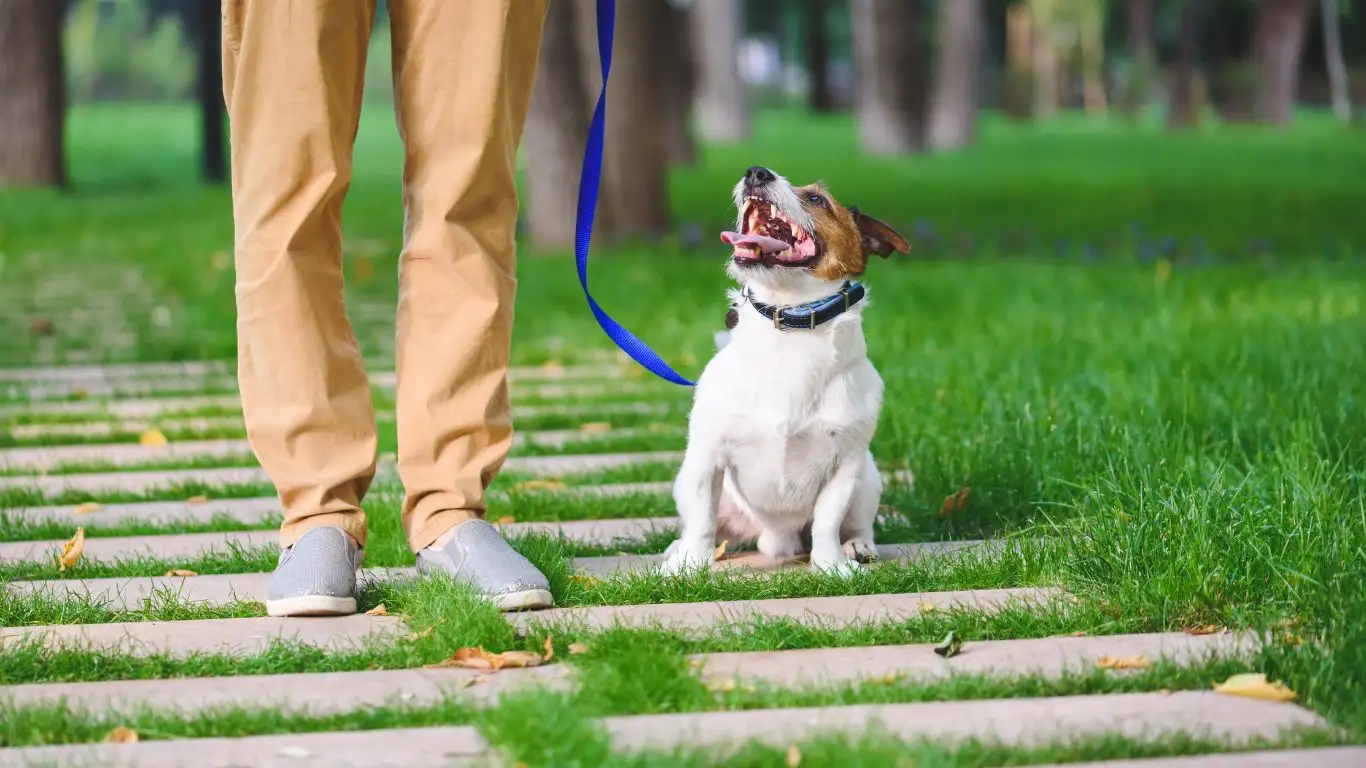
Here are some things to consider when picking the right potty spot:
- Accessibility: Make sure the spot is easy to access, especially if you have a puppy or an older dog. You want to avoid areas that are difficult to reach, like far corners of your yard or spots with lots of obstacles.
- Distraction-free zone: Choose a place away from distractions like other animals, traffic, or children playing. Your dog should be able to focus on relieving themselves without being interrupted.
- Size of the area: If you have a small yard, a single spot might suffice. But if you have more space, consider creating a specific area with a clear boundary that your dog can learn to associate with their potty time.
- Cleanliness: Dogs prefer to go in clean areas, so make sure to keep the potty spot tidy. Regularly clean the area to maintain hygiene and encourage your dog to continue using it.
Once you’ve chosen the perfect potty spot, make sure to take your dog there consistently, so they begin to associate the area with relieving themselves. It’s important to avoid taking them to other parts of the yard or outside your property, as this can confuse them.
Using Positive Reinforcement
Now that you’ve established a routine and a designated potty spot, it’s time to focus on reinforcing the behavior. Positive reinforcement is one of the most effective ways to train a dog. This means rewarding your dog every time they successfully go potty in the designated spot. Praise and treats go a long way!
After your dog does their business in the right spot, immediately praise them with a calm and happy voice. You can say something like “Good job!” or “Yes, that’s where we go potty!” While they’re still learning, be sure to give them a small treat right away so they can associate the positive reinforcement with the behavior.
Over time, your dog will begin to recognize that going potty in the designated spot results in rewards, and they will naturally continue to use that area. Don’t forget to keep up the praise and rewards until the behavior becomes fully established.
What to Do if Accidents Happen
Even with the best training, accidents will happen from time to time. It’s important not to punish your dog for accidents, as this can lead to fear and confusion. Instead, stay calm and clean up the mess without making a big deal out of it.
If you catch your dog in the act of having an accident inside, calmly take them outside to the designated potty spot and praise them if they finish there. This helps them understand that the right place is outside, not inside your home. Be patient and consistent with your training, and the accidents will become less frequent as your dog learns.
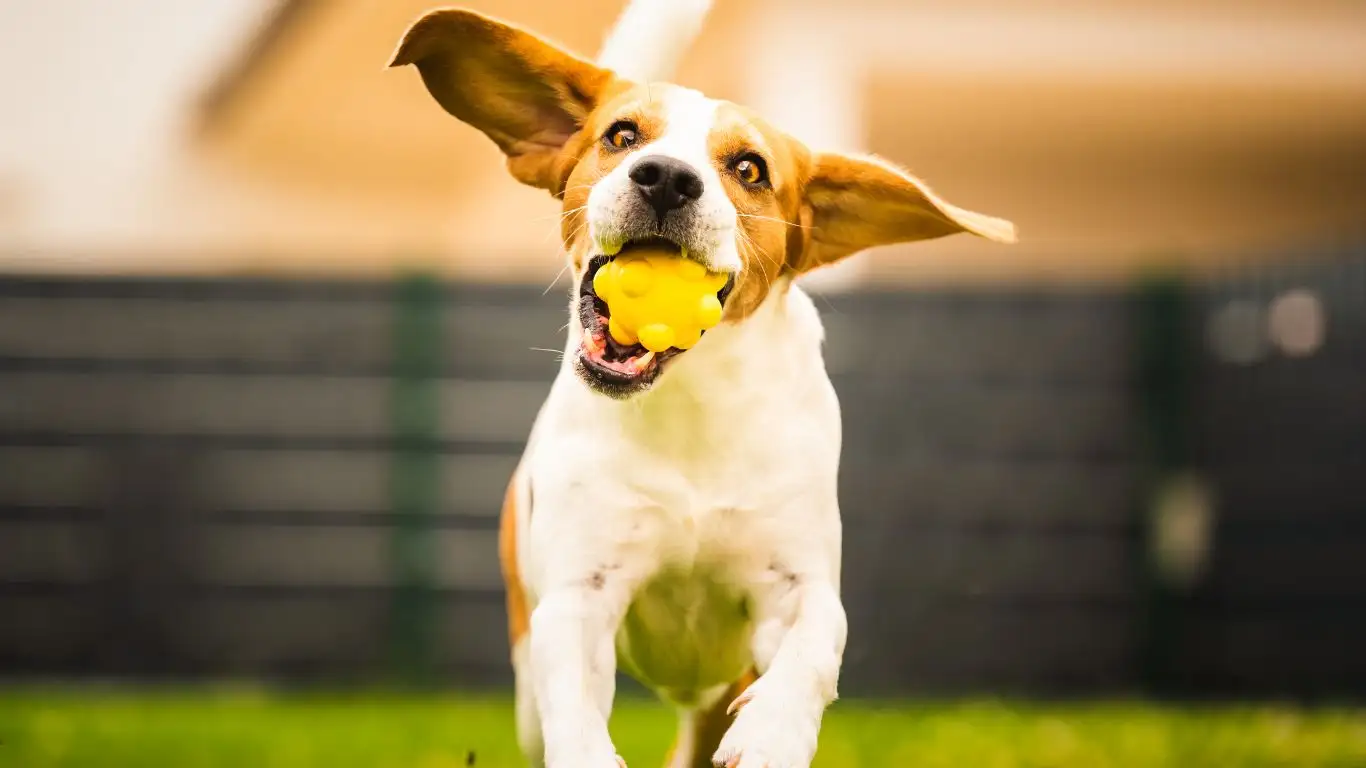
Understanding Your Dog’s Signals
One of the most important aspects of potty training is learning to recognize your dog’s signals. Dogs can’t speak to us, but they communicate in other ways that we can learn to interpret. Understanding when your dog needs to go outside will save you a lot of frustration and accidents inside the house.

As a Canine-Assisted Therapy Trainer, I’ve spent a lot of time observing how dogs communicate their potty needs. Here are a few common signs that your dog might need to go:
- Pacing: If your dog starts pacing around the house or appears restless, it’s often a sign they need to go out.
- Sniffing: Dogs have an incredible sense of smell, and they often sniff around looking for a good spot. If you notice your dog sniffing the floor or circling, it’s time to head outside.
- Whining or Barking: Some dogs vocalize when they need to go out. If your dog starts whining, barking, or scratching at the door, it’s likely a sign they need to relieve themselves.
- Going to the door: Many dogs will instinctively go to the door when they need to potty. If this happens, take advantage of their communication and get them outside right away.
Once you start recognizing these signals, you can anticipate your dog’s potty needs more effectively, which will lead to fewer accidents and better progress in their training. Be sure to act quickly when you notice these behaviors, as waiting too long could lead to accidents inside.
Using Crate Training as a Tool
Crate training is a powerful tool when it comes to potty training. While the idea of putting your dog in a crate might seem a bit harsh at first, it’s actually a very natural way to train your dog. In the wild, dogs instinctively seek out a den-like area for rest and sleep. A crate simulates that safe space, and when used properly, it can help with potty training.
Here’s how crate training can assist in teaching your dog to use a designated potty spot:
- Limits space: When your dog is in a crate, they have limited space, which means they’re less likely to relieve themselves in it. Dogs typically avoid soiling their sleeping area, which helps them hold it until they can get outside.
- Develops a routine: By using a crate, you can create a consistent routine for potty breaks. Your dog will learn that after being in the crate for a certain amount of time, it’s time to go outside to potty.
- Promotes bladder control: Crate training encourages your dog to hold their bladder until they’re let outside. Over time, this strengthens their ability to control when and where they relieve themselves.
One of the most important things to remember with crate training is not to leave your dog in the crate for too long. You don’t want to create a stressful situation, so make sure they have potty breaks and plenty of time to stretch and play when they’re not crated.
Using a Command Word
One of the easiest ways to reinforce potty training is by using a consistent command word every time you take your dog to the designated potty spot. A simple word like “Go potty” or “Do your business” will do. The key is to use the same word every time, so your dog begins to associate the command with the action.
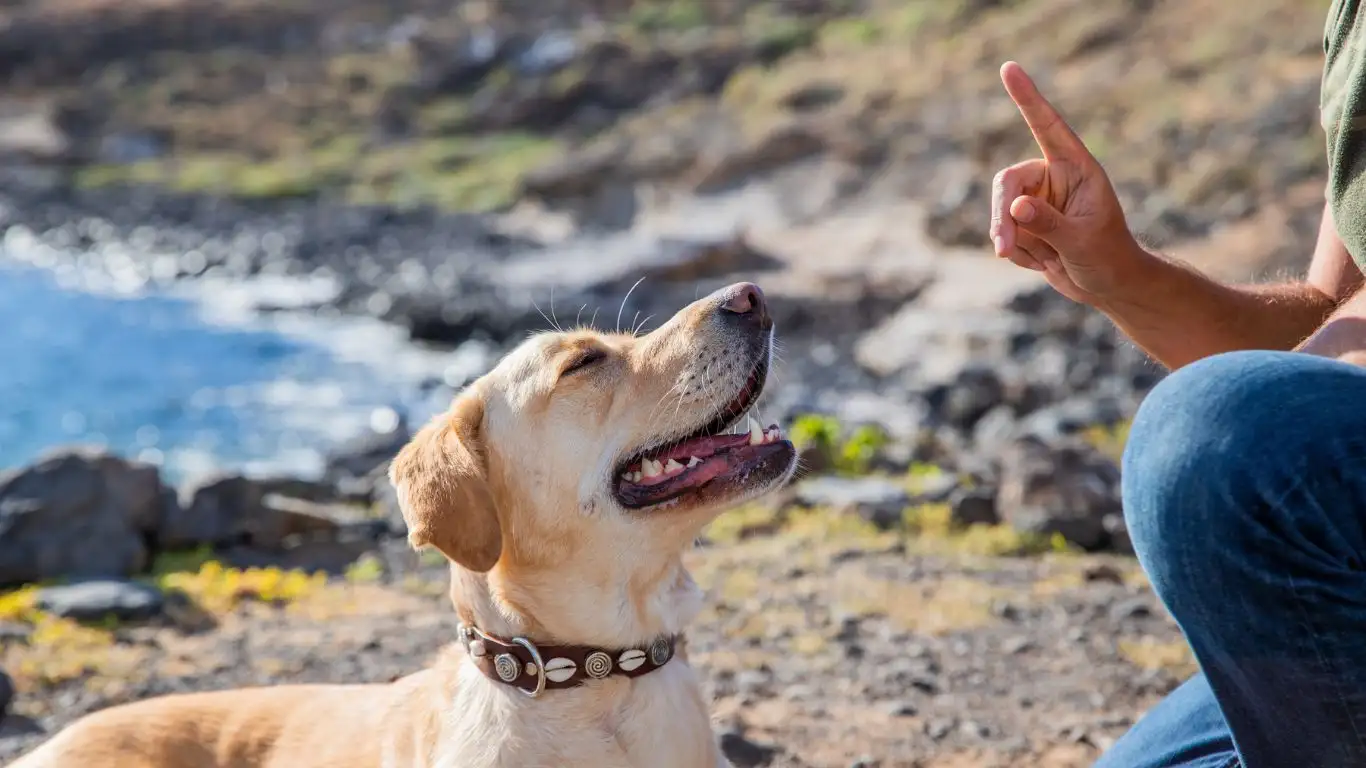
Here’s how to effectively use a command word:
- Introduce the word early: Start using the command word as soon as you begin potty training. When you take your dog outside to their potty spot, say the command in a calm and clear voice.
- Repetition is key: The more you use the same word consistently, the quicker your dog will start associating it with the action. Over time, they will understand that hearing the word means it’s time to potty.
- Be patient: Don’t expect your dog to understand the command immediately. It may take some time for them to make the connection between the word and the action. With repetition, they will eventually learn.
Using a command word not only helps reinforce your dog’s training, but it also makes the process easier for both of you. You can say the word as a cue, and your dog will know exactly what’s expected. It adds a level of clarity to the training process, making it even more effective.
Common Mistakes to Avoid
Potty training can be a bit tricky, especially when you’re just getting started. In my years of experience as a Canine-Assisted Therapy Trainer, I’ve seen many owners make common mistakes that can delay the process. Here are some things to watch out for:
- Inconsistent routines: One of the biggest mistakes is not sticking to a consistent potty schedule. Dogs need a predictable routine to understand when and where they should go.
- Not supervising enough: It’s easy to forget that puppies and even some adult dogs need supervision when they’re inside the house. Until they’re fully trained, keep an eye on them to prevent accidents.
- Punishing accidents: Never punish your dog for having an accident. This can cause anxiety and confusion. Instead, calmly clean it up and try again.
- Not rewarding quickly enough: Timing is everything when it comes to positive reinforcement. Be sure to reward your dog immediately after they go potty in the designated spot, so they know what they’re being praised for.
By avoiding these common mistakes, you’ll ensure a smoother training process for both you and your dog. Consistency, patience, and positive reinforcement will take you far in helping your dog learn where and when to go potty.
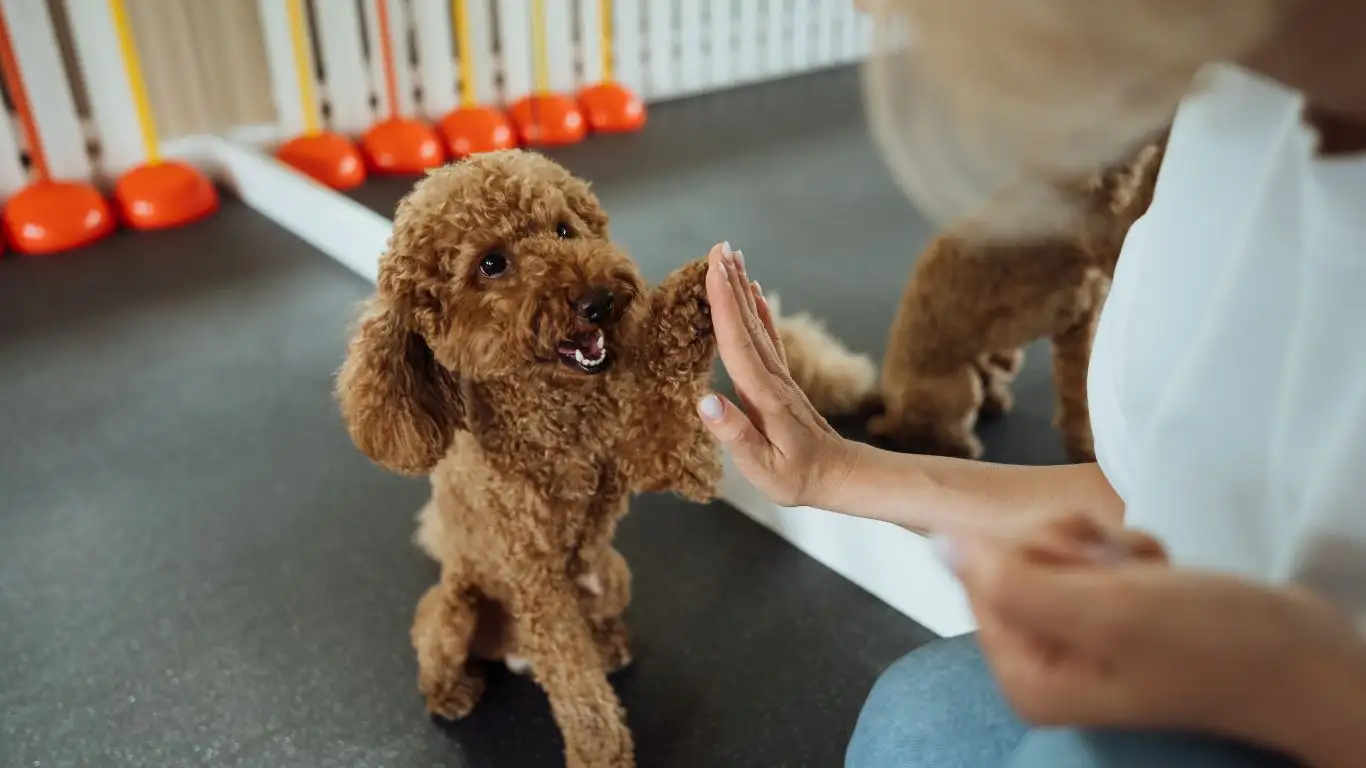
When Things Don’t Go as Planned: Troubleshooting Common Issues
Even with the best training methods in place, potty training doesn’t always go according to plan. As much as we’d like to think our dogs will pick it up immediately, there are often hiccups along the way. Whether it’s an accident inside the house or your dog not quite getting the hang of it, don’t stress – this is completely normal! In fact, as a Canine-Assisted Therapy Trainer, I’ve seen just about every scenario you can imagine, and I can assure you that with patience and persistence, your dog will get there.
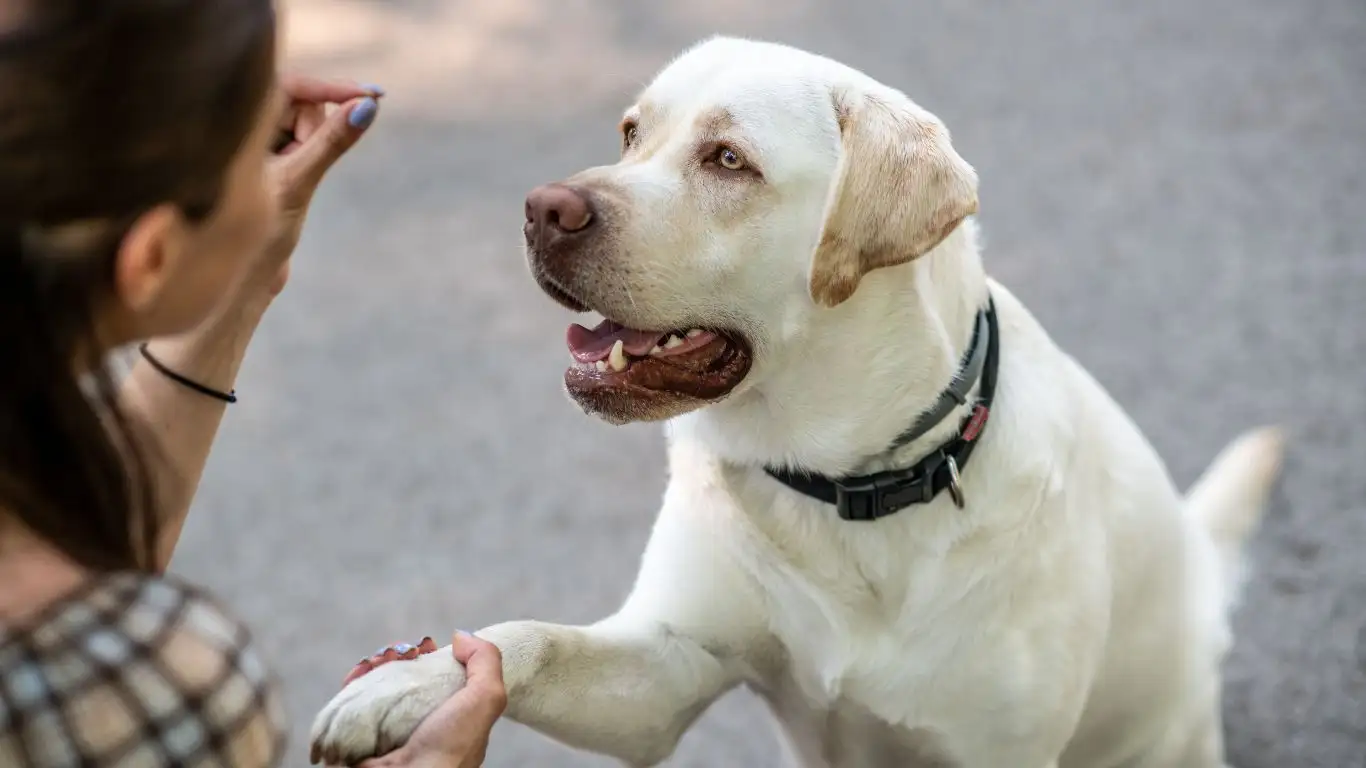
Here are a few common issues that might arise during potty training, along with ways to troubleshoot them:
1. Your Dog is Having Accidents Inside
Accidents happen, and they’re a normal part of the process. If your dog is still having accidents inside, the first thing to check is whether you’re being consistent with their potty schedule. If you’re unsure, try to keep a log of when your dog is eating, drinking, and going outside, to make sure you’re giving them enough opportunities to relieve themselves.
Another thing to consider is the area where your dog is having accidents. Are they consistently going in the same spot? If so, that might be a sign that your dog needs more reinforcement to understand that the designated potty area is outside. Try taking them to that spot immediately after an accident and reward them when they go outside.
2. Your Dog Doesn’t Want to Go Outside
If your dog is hesitant or outright refusing to go outside, it could be because of something as simple as fear or discomfort. Maybe they’ve had a negative experience outside, like getting scared by a loud noise or an encounter with another animal. In this case, try to make their potty time outside as pleasant as possible. Bring along their favorite toy or treat to create positive associations with the outdoors. You can also try walking them around for a few minutes before taking them to their designated potty spot.
If this behavior persists, it might be worth investigating further to rule out any medical concerns. A visit to the vet can help ensure there are no underlying issues preventing your dog from going outside.
3. Your Dog Doesn’t Understand the Designated Spot
If your dog is using the bathroom everywhere except the designated potty spot, it might be time to go back to basics. Ensure you’re taking them to the spot regularly and consistently. It’s important to stick with a specific routine so your dog begins to associate that location with potty time. Also, make sure the area is clear of distractions. You want your dog to focus on the task at hand, not on other things going on around them.
Another strategy is to use positive reinforcement consistently. If they even get close to the designated spot, give them praise and rewards. This will reinforce the idea that this is the area where they’re supposed to go. If they do relieve themselves in the correct spot, shower them with praise and a treat right away!
Gradually Reducing Supervision
As your dog becomes more consistent in using the designated potty spot outside, it’s time to reduce supervision. However, this is a gradual process. The goal is to give your dog more freedom around the house while ensuring they don’t have accidents. As tempting as it might be to let them roam freely, it’s important to still keep an eye on them until you’re confident that they’ve mastered the routine.
Gradually lengthen the time between potty breaks, but always be mindful of how much time has passed. If your dog seems like they need to go, take them outside promptly. Once your dog has successfully gone through a few weeks without accidents, you can start reducing supervision even more. Eventually, you should be able to trust them to signal when it’s time to go outside without needing constant supervision.
When to Seek Professional Help
Most dogs will eventually get the hang of potty training with enough patience and consistency. However, if you’ve tried everything and your dog still isn’t catching on, it might be time to seek help. A professional dog trainer or animal behaviorist can provide additional guidance and tailored solutions based on your dog’s individual needs.
In some cases, there might be medical issues that are making potty training difficult. Urinary tract infections (UTIs), gastrointestinal issues, or other health concerns can cause frequent accidents or a reluctance to go outside. If you suspect that your dog may be having health problems, a visit to the vet is essential to rule out any underlying conditions. Sometimes, a small health issue can make all the difference in potty training progress.
References
For more information on potty training and general dog behavior, check out these trusted sources:
Disclaimer
This article is intended for informational purposes only. Potty training success can vary depending on your dog’s breed, age, and temperament. If your dog has trouble with potty training or exhibits unusual behavior, consider consulting a professional dog trainer or veterinarian. The information provided is based on personal experience and is not a substitute for professional advice.
Remember, every dog learns at their own pace, so be patient and keep reinforcing positive behavior. Potty training is a process, but with time, consistency, and a little bit of patience, you and your dog will reach success together!
